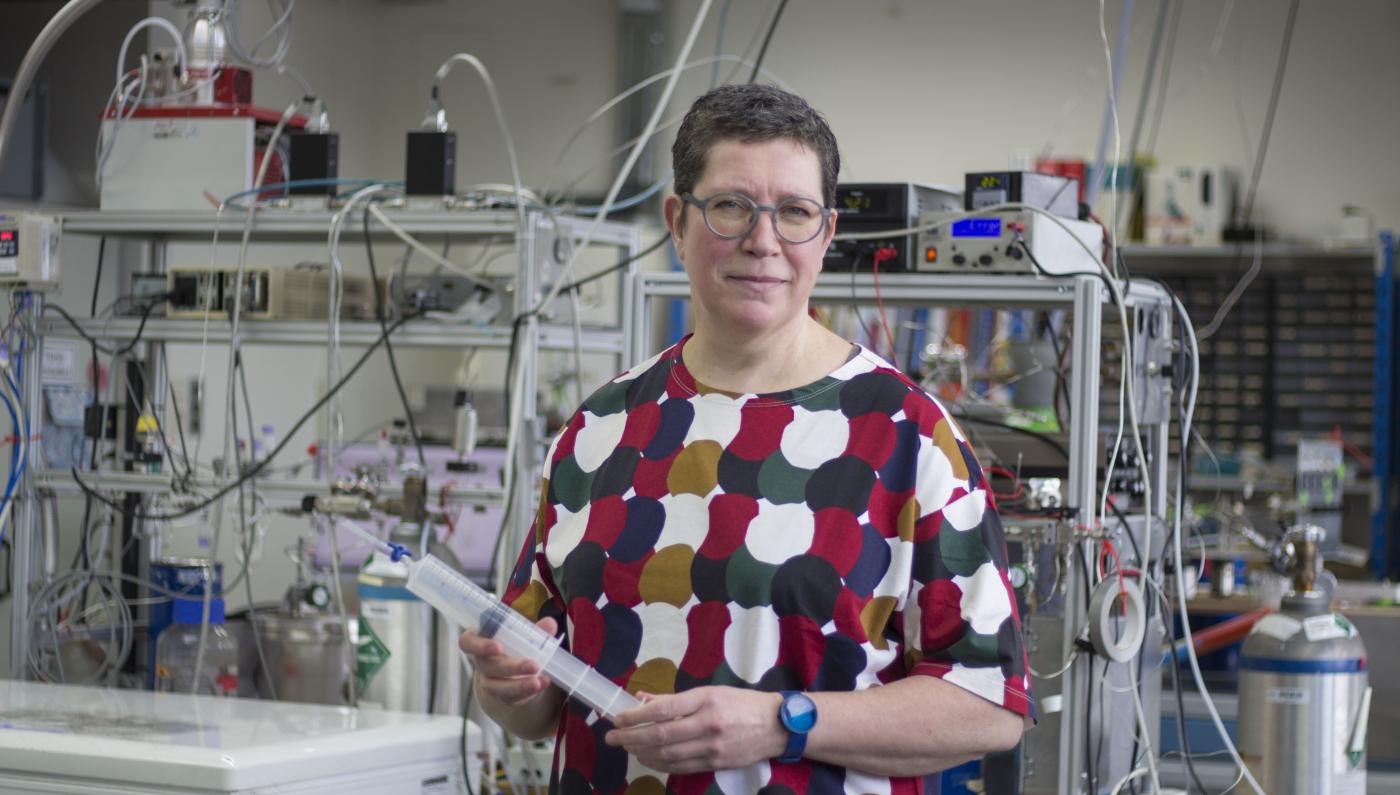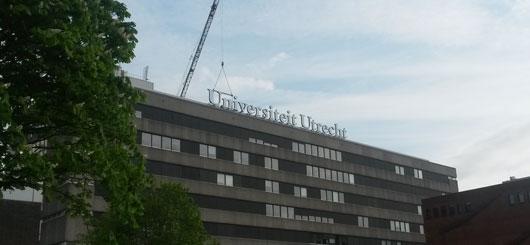'Sick building' puzzles UU; three employees left the university

Three close colleagues of Carina van der Veen, research officer at the Institute for Marine and Atmospheric Research (IMAU) chose to quit their jobs in Utrecht at some point in the past year and a half. The three had complained for years about health issues, including headaches and irritated and infected eyes and airways.
One of the men experienced issues that were so severe he had to call in sick repeatedly. This employee was offered a severance package. Another colleague decided to take early retirement, and a third accepted a job at Wageningen University.
Van der Veen herself has health issues, too. “Mostly around the eyes, eczema, and a burning sensation on my skin. But it’s not as severe with me as it was with the others. They’d come in in the mornings and immediately know whether it was going to be a good or a bad day.”
Hard to accept
IMAU professor Thomas Röckmann calls it a serious situation. “The core of our technology department has disappeared. There’s widespread uncertainty amongst employees. Some others have also stated they’ve been experiencing health issues. People are wondering: what if I get these things too? All in all, it’s hard to accept.”
The issues, Röckmann says, started after the last major renovation of the Buys Ballot building in 2010. The renovation included removing most of the lab facilities, and turned the Buys Ballot into an office building. The professor says all sorts of things have been investigated and attempted in order to find the cause. The IMAU even used its own measuring equipment to figure out the mystery. “I’m out of ideas now.”
Photo DUB
List of measures
The Work Safety and Environment coordinator of the faculty of Science, Joris Baijens, acknowledges the unfortunate situation. “Our goal, of course, is that everyone can work in good health and good fun. Unfortunately, in the Buys Ballot building, that’s not the case for everyone. And we seem to be unable to figure out what the cause is.”
Baijens talks to DUB about a list of measures taken in the past ten years. It all started with a questionnaire sent out amongst employees in the building in 2010. No less than 70 percent of respondents stated they sometimes experienced health problems, such as dry eyes or headaches. “That was a clear signal,” Baijens says. “The faculty had to act.” The immediate cause for the survey was that after the renovation of the Buys Ballot building from labs to offices, multiple complaints about the indoor environment had been filed.
The faculty called in the university’s department of Corporate Real Estate & Campus, which is responsible for the university’s buildings. A list of measures followed, including adapting the temperature inside the building and the air treatment units, and re-setting the sun protection. Nothing helped much. A new survey in 2012 led to confusing results. Some of the employees reported more complaints than two years before, while others said they had fewer health problems. Only a quarter of the employees indicated that they did not experience any health problems at all.
A real headache
In the meantime, the first severe complaints started to come in from a lab technician at the IMAU. An occupational hygienist was called in to investigate. The investigation included measuring the air in the hallways for glass fibres, which might have come from the finishing of the ceilings. Nothing was found, and the man’s health problems didn’t go away.
And so, the building remained a real headache for the faculty and the Corporate Real Estate & Campus department. Especially when two other colleagues of the lab technician also reported problems. Temporary other workplaces did nothing to alleviate the issues.
It also remained unclear why this group of co-workers, on the building’s sixth floor, experienced such severe problems in comparison to other employees in the building. The people involved said it was unlikely to be related to the lab they worked in, as the lab technicians mostly worked with samples of air, water, and ice, and not with chemicals.
For a little while in 2017, it seemed as though a solution had been found, when micro-organisms were detected in the air treatment system. But the concentrations found remained well within the margins, and specialists said they could not have been the cause of the health problems the employees experienced. Still, to be safe, all the supply and drainage channels were cleansed in 2018. Baijens: “But there’s nothing of which we can say: this is it.”
Pungent odours
Still, Carina van der Veen is less than impressed with what the university’s done so far. “We, for instance, don’t believe the air treatment is set perfectly. When the system was on 24 hours a day for a while for a test, we did notice some improvement. But that’s expensive and polluting, so the university preferred not to continue with that.”
But the biggest problem, says Van der Veen, is that after ten years, the university still doesn’t realise just how severe the issue is. “Nobody talks to each other, and there’s no integral policy for good air quality here. Take the cleaners, for example. They’re not told about what’s going on here. So perhaps it’s possible some products are used which spread pungent odours which then exacerbate people’s headaches.”
Van der Veen: “You should realise that these issues have been the most important topic of conversation for years. People are worrying, wondering: why aren’t they doing anything?”
IMAU professor Röckmann also acknowledges that “nobody seems to feel responsible”. He blames this on the fact that the faculty needs to call in university-wide services to get anything done. “That communication often proves tricky. That causes people to become angry and distrustful.”
New investigation
Work Safety and Environment coordinator, Joris Baijens, understands the dissatisfaction amongst the IMAU employees. “After all, the problems haven’t been solved.” “But,” he says, “we’re really trying to communicate as much as possible and the best we can with all the parties involved here. Sometimes, that can be tricky, but all the measures we’ve suggested as a faculty have been picked up by the university’s services. It just hasn’t led to the desired outcome yet.”
In Baijens’ opinion, the university’s done everything in its power to solve the problems: investigations, maintenance, and cleaning. Still, the recent resignations of the IMAU employees was enough reason to try once more, and hire an external agency to thoroughly investigate the entire Buys Ballot building again.
First, a survey will be sent to all the employees in the building in January 2020. The questionnaire will also be conducted amongst students and teachers coming in for classes in the building, as well as the study associations that recently moved there. Baijens: “We hope, of course, that this agency will provide the ultimate solution.”
Van der Veen shares that hope, but is weary. “It’s quite unpleasant to have to tell your story over and over. I’ve also kept journals of my complaints, but that’s rather taxing to keep up. And the problems people experience are very elusive: not everyone has the same issues, and those issues aren’t always there.”
She herself still likes going to work. “But many of my health issues are problems I only experience when I’m in this building. That won’t go away by itself. And sometimes I do think: what if it gets worse?”